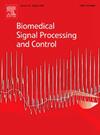MS-LKSeg: enhancing multi-semantic synergistic learning with large kernel convolution for medical image segmentation
IF 4.9
2区 医学
Q1 ENGINEERING, BIOMEDICAL
引用次数: 0
Abstract
Medical image segmentation is dedicated to accurately distinguish different regions, tissues or lesions in images. The introduce of multiple semantic information, such as shape, texture, and location can provide more clues and bases for segmentation algorithms. However, the effective fusion and utilization of multiple semantic information remains a major challenge. To address this problem, we proposed MS-LKSeg, which aims to explore the synergistic relationship between spatial attention and channel attention at different semantic levels, and to integrate semantic information originating from different levels with rich diversity more efficiently. Specifically, we introduce the Multi-semantic Information Synergy (MIS) block in the encoder of MS-LKSeg, which efficiently captures different semantic spatial structures by extracting features of spatial dimensions (height and width), decomposing them into sub-features, and then passing them through a shared depthwise convolutional layer. Subsequently, it explicitly models long-range dependencies among channels to achieve robust feature interactions, thereby alleviating the disparities among multi-semantic information. Additionally, in the skip connection of MS-LKSeg, we apply depthwise convolution with a large kernel to the encoder’s output to capture broader contextual information and reduce information loss during feature propagation. This approach also contributes to the model maintaining higher accuracy and robustness in segmentation tasks. The superiority of our method is demonstrated by the experimental evaluations performed on multiple publicly available datasets. Our implementation code is available at https://github.com/niuniude/MS-LKSeg.
MS-LKSeg:基于大核卷积增强多语义协同学习的医学图像分割
医学图像分割致力于准确区分图像中的不同区域、组织或病变。形状、纹理、位置等多种语义信息的引入,可以为分割算法提供更多线索和依据。然而,多种语义信息的有效融合和利用仍然是一个重大挑战。为了解决这一问题,我们提出了MS-LKSeg,旨在探索不同语义层次的空间注意和通道注意之间的协同关系,并更有效地整合来自不同层次且多样性丰富的语义信息。具体来说,我们在MS-LKSeg的编码器中引入了多语义信息协同(MIS)块,该块通过提取空间维度(高度和宽度)的特征,将其分解成子特征,然后通过共享的深度卷积层,有效地捕获不同的语义空间结构。随后,它显式地对通道间的远程依赖关系进行建模,以实现鲁棒的特征交互,从而减轻多语义信息之间的差异。此外,在MS-LKSeg的跳过连接中,我们对编码器的输出应用带有大核的深度卷积,以捕获更广泛的上下文信息,并减少特征传播过程中的信息损失。该方法还有助于模型在分割任务中保持较高的准确性和鲁棒性。在多个公开可用的数据集上进行的实验评估证明了我们方法的优越性。我们的实现代码可从https://github.com/niuniude/MS-LKSeg获得。
本文章由计算机程序翻译,如有差异,请以英文原文为准。
求助全文
约1分钟内获得全文
求助全文
来源期刊

Biomedical Signal Processing and Control
工程技术-工程:生物医学
CiteScore
9.80
自引率
13.70%
发文量
822
审稿时长
4 months
期刊介绍:
Biomedical Signal Processing and Control aims to provide a cross-disciplinary international forum for the interchange of information on research in the measurement and analysis of signals and images in clinical medicine and the biological sciences. Emphasis is placed on contributions dealing with the practical, applications-led research on the use of methods and devices in clinical diagnosis, patient monitoring and management.
Biomedical Signal Processing and Control reflects the main areas in which these methods are being used and developed at the interface of both engineering and clinical science. The scope of the journal is defined to include relevant review papers, technical notes, short communications and letters. Tutorial papers and special issues will also be published.
 求助内容:
求助内容: 应助结果提醒方式:
应助结果提醒方式:


